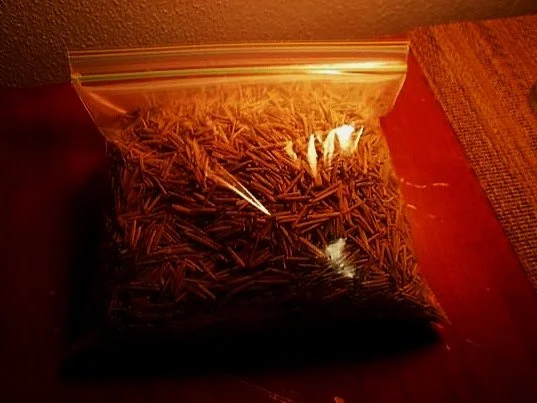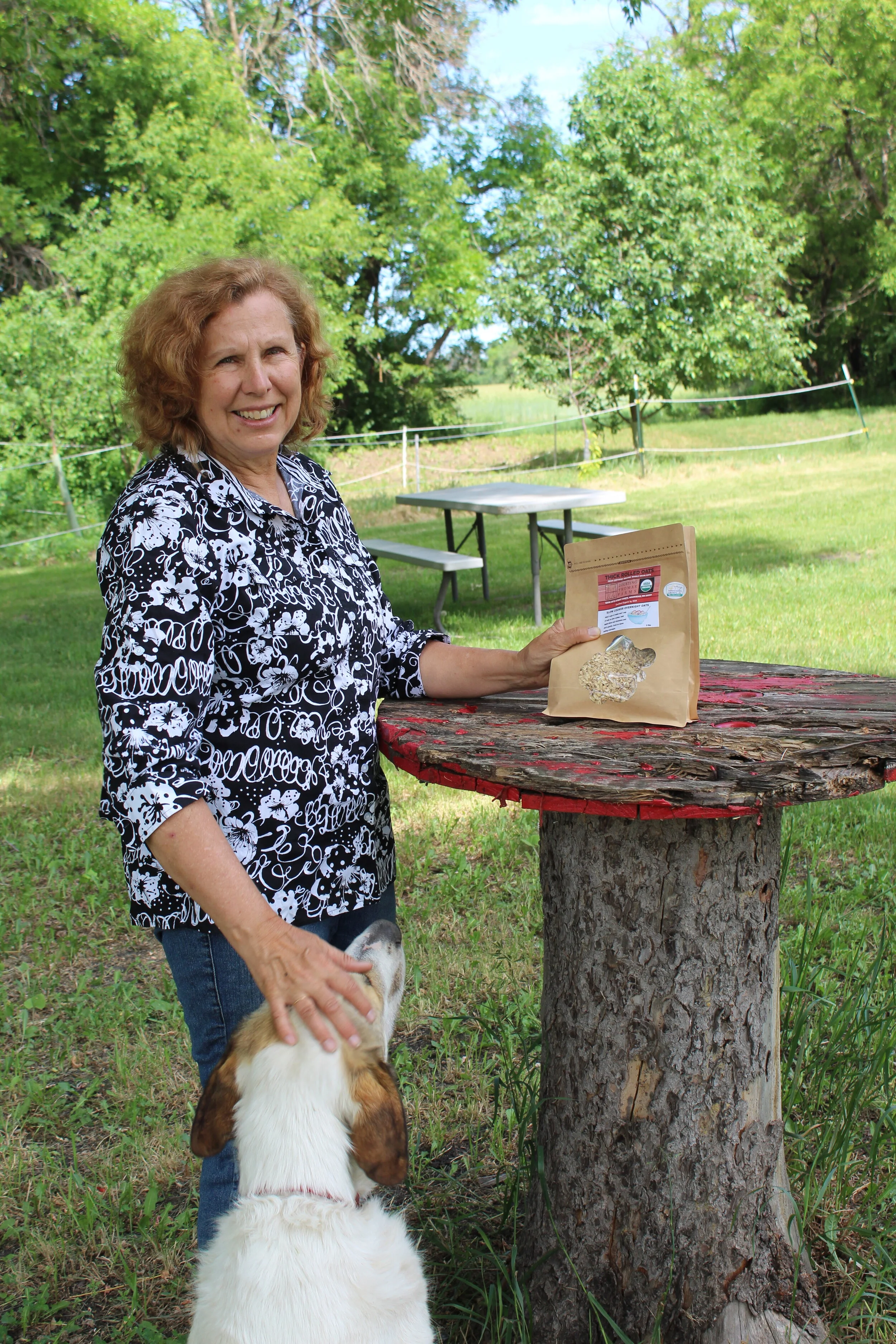Locally Harvested Wild Rice in Otter Tail County
Wild Rice surprises me.
First, it’s not what I expect. Actual wild rice is gray in color and not black like the stuff I purchase at the store.
Prepared wild rice with aromatics
Secondly, it grows right here in Otter Tail County in West Central Minnesota!
A bag of locally harvested wild rice. It’s gray in color
Paul Shol of Fergus Falls is among those who harvest it.
For the past six years, he’s joined his friends - Greg Palmer and Doug Hedtke - in traversing the county’s lakes and rivers to harvest the ripe stands of wild rice.
Before you get your own canoe ready to find wild rice, there are a few things you should know about the harvest:
You can’t harvest on Indigenous waters.
You need a license. It’s much like a fishing license, Paul said. That can be obtained through the Minnesota Department of Natural Resources.
There’s a season for wild rice harvest. It runs from the end of August through September.
It’s illegal to harvest green wild rice.
How it all started…
Paul learned about wild rice harvesting or “ricing” as they call it, from Greg. Paul and Greg share a love for the outdoors and often bike, hike and camp together. On one of their excursions, Greg described how, during his 1970s college days, he harvested and sold wild rice using the funds for his college tuition and textbook costs.
The price of wild rice may not equal today what it did in the past, but the three enjoy giving it as gifts to family and friends with some sales. Paul sells it through The Market in Fergus Falls when harvests have been good.
Before they even harvest, Paul goes out to scout the waters. He looks for stands of wild rice that will be ripe and easy to access. While they focus on Otter Tail County, the three also harvest around the Brainerd area, he said.
Not all stands are harvestable. There is one along the Otter Tail River that he calls “jungle rice.” It’s very high, Paul said. Just like Goldilocks, the aim is to find stands that aren’t too thick nor too thin.
It is a sensitive crop, he said. Big winds can knock the ripe wild rice off the plant. And, during the growing season, if the water is high, the roots can be pulled up as water pushes on the stalk’s leaves.
Harvesting wild rice
Paul Shol ricing
When they do harvest, Paul is the poler. He stands at one end of the canoe and, much like the gondola drivers in Venice, he uses a long pole to guide the canoe through the water and wild rice stands.
He admits he did fall in the water once. A person in the canoe was moving around causing him to lose his balance, he said. It was not a good day.
They don’t all go out to harvest at the same time. One day Doug will be a “thresher” and the next, Greg will.
In their role as threshers, they sit on the bottom of the canoe. In each hand they hold a “knocker” which is a piece of wood that weighs less than a pound and measures around two feet.
They use one knocker to pull the wild rice plant towards the canoe while the other knocker gently taps the plant head so the ripe wild rice falls to the canoe floor.
Just as there are critters and pests with crops and gardens, so, too, does wild rice have its yucky parts. In this case, it’s worms!
Doug and Greg wear long sleeves and pants during the harvesting. They put tape around the collar, sleeve cuffs and pant leg bottoms to keep the pests at bay.
Once they complete the harvest, the wild rice is bagged and taken to a processor. There are processors in Ponsford and Mahnomen, Paul said.
The wild rice first goes through the parched. Here the wild rice is heated up, starting the process of separating the hull from the rice kernel. Next it goes to the threshing machine followed by the mill where the hulls go out through one area and the kernels through another.
“It’s all modern equipment,” he said.
In case you haven’t guessed, not all wild rice is created equal. Some “wild’ rice is cultivated. A strain of wild rice was developed in the 1970s and 1980s making it easier to raise it in paddies.
While such product can still be called “wild rice,” the packaging may use terms like cultivated.
They collect around 1,500 to 1,600 pounds of wild rice in a season, but there are good years and not as good years, he said. Of that yield, about 40 to 50 percent is removed due, in part, to the hulls and water. Usually they have 750 to 800 pounds of finished wild rice.
And wild rice isn’t actually a rice. It’s an aquatic grass seed.
He loves the taste of wild rice and he likes its earthy taste.
However you describe it, there’s nothing that adds to a meal like wild rice.
But how do you cook it?
Paul and our chef Leon use similar methods to prepare wild rice.
Easy Cook Recipe for Wild Rice
Ingredients:
1 c. Locally harvested wild rice
Water
Method:
Preheat oven to 500 degrees F.
Since the rice in cold water until water is clear
Place the clean rice in an oven safe dutch oven
Pour 3 c. Boiling water into the pot with the wild rice
Cover with the oven safe lid and put in the oven on center rack
Turn off the oven, keeping the door closed, and let it sit overnight or for 4 - 6 hours.
Rice will be perfectly cooked.
Refrigerate until ready to use, reheat in saucepan or microwave and serve with seasoning
A Great Dressing for Wild Rice Salad
Paul uses it in soups, stews and salads. Here’s one of his favorite wild rice salads which has a dynamite dressing!
For the dressing,
2 Tbsp white wine vinegar
6 Tbsp olive oil
1/2 garlic clove
1 tsp sugar
1/2 tsp salt
1/2 tsp black pepper
To the wild rice, he adds water chestnuts, slivered almonds and either grapes or dried cranberries. Mix it with the dressing.
I learned so much about wild rice from Paul and have a greater appreciation for it and the effort taken in harvesting it.
YUM!
Look for sales of locally harvested wild rice in your area. If you live in the Fergus Falls vicinity, check out the Fergus Falls Farmers Market and the store, The Market, also in Fergus Falls.
Check out the story of our Locally Grown Meal featuring pheasant and wild rice plus more at thelocalgrowers.com.
Note: If you enjoy stories on local growers and farmers markets, help support this page through Buy Me A Coffee. The “tip” you leave helps with travel and blog upkeep costs. I thank you for your support.










